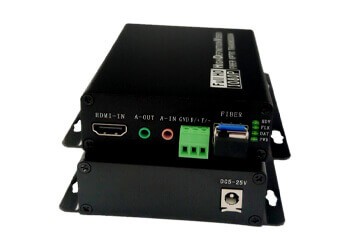Watching TV and making phone calls are common scenes in life. Do you know how the information is transmitted over long distances? The answer is through optical transmitters and receivers. Their appearance has made the long-distance transmission of data through light a reality, bringing great convenience to our lives. Know about optical transmitters and receivers is so important, want to learn more about them? For example how do they work? What are the advantages over other transportation methods? In what applications can they be used?
Answering the Questions
How Do Optical Transmitters and Receivers Work?
Light emitter: emits a light source containing data;
Light Receiver: Receives a light source and converts the data contained in it into data that other devices can understand;
Fiber Optic Cable: Medium.
What Are the Benefits of Optical Transmitters and Receivers?
* Transfer data over long distances without performance degradation;
* Optical fiber cables are not easily disturbed by electromagnetic fields;
* Fiber optic cables transmit data at much higher speeds than copper cables.
Where Are Optical Transmitters and Receivers Used?
Optical transmitters and receivers are used in various industries:
Telecommunications companies: Use optical transmitters and receivers to transmit data over long distances for telephone and Internet services.
Data Center: Use these technologies to transfer large amounts of data quickly and reliably.
Medical equipment such as endoscopes: use optical transmitters and receivers to transmit images and video.
What Are Some Products Related to Optical Transmitters and Receivers?
Amazon.com: Buy fiber optic cable testers to test the quality of your fiber optic cables; buy many books covering the basics of fiber optics and optical transmitters and receivers, etc.
Are There Any YouTube Videos That Can Help Me Understand Optical Transmitters and Receivers?
Yes, there are many YouTube videos available that can help you understand optical transmitters and receivers. One example is the video “How Optical Fiber Cables Work” by TechQuickie. This video explains the basics of fiber optics and how optical transmitters and receivers work.
Conclusion
Why are optical transmitters and optical receivers so widely used? You can see them in various industries. Examples include telephone and Internet services at telcos; when data centers are transferring large amounts of data; when endoscopes need to display images and videos. In addition, compared with traditional copper cables, technological advances allow them to transmit data faster and have stronger anti-interference.
Frequently Asked Questions
Q: Can Fiber Optic Cables Be Used for Home Internet?
A: Yes, available. However, due to cost and installation complexity, some areas are not available. Before using, you need to check in advance whether fiber optic cables can be used in the area.
Q: How Fast Can Fiber Optic Cables Transfer Data?
A: Up to a few terabits per second.
Q: How Much Does the Optical Transmitter and Receiver Cost?
A: It is more expensive than traditional copper cables, but the exact cost varies by product.
See What We Can Do

